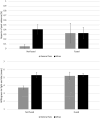Anti-social behavior and soccer identities: different continents, same mindset?
- PMID: 39659800
- PMCID: PMC11627210
- DOI: 10.1080/15298868.2024.2423829
Anti-social behavior and soccer identities: different continents, same mindset?
Abstract
Although most soccer fans support their teams peacefully, anti-social fan behavior continues to appear across the globe. We tested the roles of identity fusion and membership to an extreme fan group (ultras) in explaining fan disorder in two understudied contexts: Indonesia (Study 1) and Australia (Study 2). Incidents of violence and antisocial behavior were rarely reported among general Indonesian (9%) or Australian fans (6%) but were significantly higher among their respective ultras groups (37%; 20%). Identity fusion predicted antisocial behavior, especially when combined with fan group membership. Fusion explained anti-social behaviors better than identification or social dominance orientation. Understanding the motivators of intergroup violence is crucial to devise more effective ways of channeling cohesion among group members into peaceful forms of prosocial action.
Keywords: Identity fusion; fandom; intergroup psychology; social dominance orientation; ultras.
© 2024 The Author(s). Published by Informa UK Limited, trading as Taylor & Francis Group.
Conflict of interest statement
No potential conflict of interest was reported by the author(s).
Figures
References
-
- Amara, M. (2008). The Muslim world in the global sporting arena. The Brown Journal of World Affairs, 14(2), 67–75.
-
- Australian Bureau of Statistics . (2016). 2016 Census. Available from: Accessed 30th October https://www.abs.gov.au/websitedbs/censushome.nsf/home/2016
-
- Ayres, T. C., & Treadwell, J. (2012). Bars, drugs and soccer thugs: Alcohol, cocaine use and violence in the night time economy among English soccer firms. Criminology & Criminal Justice, 12(1), 83–100. 10.1177/1748895811422949 - DOI
-
- Azra, A. (2008). Indonesia, Islam, and democracy: Dynamics in a global context. Equinox Publishing.
-
- Besta, T., Szulc, M., & Jaśkiewicz, M. (2015). Political extremism, group membership and personality traits: who accepts violence?/Extremismo político, pertenencia al grupo y rasgos de personalidad:¿ Quién acepta la violencia? Revista de Psicología Social, 30(3), 563–585. 10.1080/02134748.2015.1065085 - DOI
LinkOut - more resources
Full Text Sources


